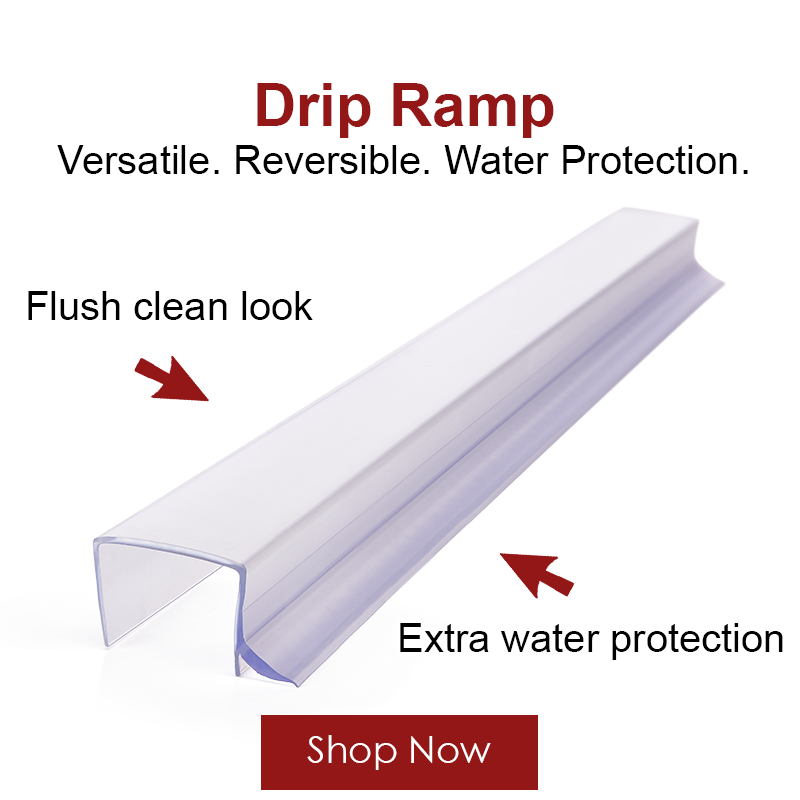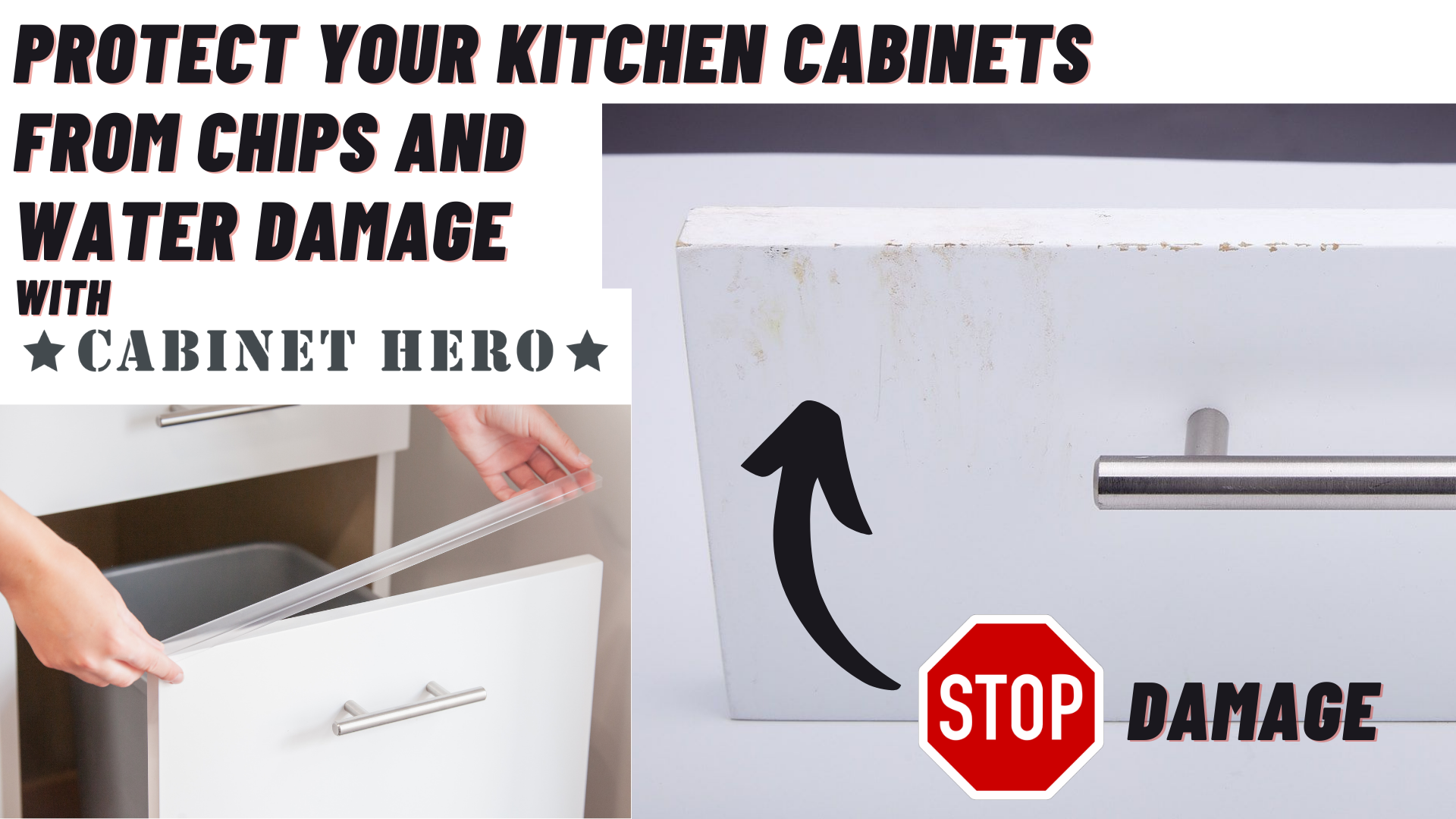Apply a waterproof sealant to kitchen cabinets. Wipe spills immediately to prevent water damage.
Kitchen cabinets face constant exposure to water, which can lead to damage over time. Protecting them is crucial for maintaining their longevity and appearance. Start by applying a waterproof sealant, which provides a protective barrier against moisture. Regularly wiping spills and splashes can also prevent water from seeping into the wood.
Using mats or liners inside cabinets can offer additional protection by absorbing excess moisture. Ensuring proper ventilation in your kitchen helps to minimize humidity levels, reducing the risk of water damage. Implementing these strategies can help keep your kitchen cabinets in pristine condition and prolong their lifespan.
Table of Contents
ToggleIdentify Problem Areas
Water can easily damage kitchen cabinets. Identifying problem areas is crucial. This helps in preventing costly repairs and maintaining a healthy kitchen environment.
Common Water Damage Spots
Knowing where water damage often occurs can save your cabinets. Here are some common spots:
- Sink Area: Water splashes and leaks are frequent here.
- Dishwasher: Leaks from the dishwasher can seep into nearby cabinets.
- Refrigerator: Condensation and spills can affect the base cabinets.
- Under the Countertop: Water can seep through cracks and damage the cabinets below.
Signs Of Early Damage
Early detection can prevent severe damage. Look for these signs:
| Sign | Description |
|---|---|
| Discoloration | Cabinet surfaces may turn dark or yellow. |
| Swelling | Wood may start to swell and warp. |
| Pungent Odor | A musty smell often indicates mold. |
| Peeling Paint | Paint may start to bubble and peel. |

Proper Sealing Techniques
Protecting kitchen cabinets from water damage requires proper sealing techniques. Sealing creates a barrier that prevents moisture from penetrating the wood. This keeps your cabinets looking new and lasting longer.
Choosing The Right Sealant
Selecting the correct sealant is crucial. The best sealants are water-resistant and durable. Some popular options include:
- Polyurethane: This sealant is strong and provides a clear finish.
- Varnish: Varnish offers a shiny, protective layer.
- Lacquer: Lacquer dries quickly and gives a smooth surface.
- Shellac: Shellac is natural and easy to apply.
Read the product labels to ensure the sealant suits your cabinet material. Choose a sealant that matches your kitchen’s style and needs.
Step-by-step Application
Applying sealant properly ensures maximum protection. Follow these steps for the best results:
- Prepare the Surface: Clean the cabinets with a mild soap solution. Let them dry completely. Sand the surface lightly to remove old finishes.
- Apply the Sealant: Use a brush or roller to apply a thin coat of sealant. Follow the wood grain for a smooth finish.
- Let it Dry: Allow the sealant to dry as per the instructions on the label. This may take several hours.
- Sand Again: Lightly sand the surface with fine-grit sandpaper. This ensures a smooth finish for the next coat.
- Apply Additional Coats: Apply at least two more coats of sealant. Let each coat dry completely before adding the next one.
- Final Inspection: Check for any missed spots or uneven areas. Touch up as needed.
Use these steps to ensure your kitchen cabinets are well-sealed and protected from water damage.
Waterproof Cabinet Materials
Water can damage kitchen cabinets. Using waterproof materials prevents this. Here are some top choices for waterproof cabinet materials.
Best Material Choices
Choosing the right material is crucial. Here are the best waterproof options:
- Marine-Grade Plywood: Made for moist environments.
- Stainless Steel: Durable and water-resistant.
- PVC (Polyvinyl Chloride): Completely waterproof.
- HDPE (High-Density Polyethylene): Resistant to water and chemicals.
Pros And Cons
| Material | Pros | Cons |
|---|---|---|
| Marine-Grade Plywood |
|
|
| Stainless Steel |
|
|
| PVC |
|
|
| HDPE |
|
|
Regular Maintenance Tips
Regular maintenance is key to keeping your kitchen cabinets looking new. By following a few simple steps, you can protect them from water damage. This section provides practical tips for daily and monthly care.
Daily Cleaning Routines
Daily cleaning helps prevent water damage and keeps cabinets shiny. Follow these simple steps:
- Wipe spills immediately with a dry cloth.
- Use a damp cloth for daily cleaning.
- Avoid harsh chemicals; opt for mild soap.
- Dry cabinets thoroughly after cleaning.
These steps ensure that water does not seep into the wood. Consistent daily cleaning will extend the life of your kitchen cabinets.
Monthly Inspection Checklist
A monthly inspection helps identify potential issues early. Here’s a checklist to guide you:
| Task | Description |
|---|---|
| Check for Leaks | Inspect under the sink and around pipes. |
| Examine Sealants | Ensure sealants around edges are intact. |
| Inspect Hinges | Look for rust or water stains on hinges. |
| Assess Finish | Check for wear and tear on the cabinet finish. |
Completing this checklist helps catch small issues before they become big problems. It maintains the health and appearance of your cabinets.
Effective Use Of Liners
Protecting your kitchen cabinets from water damage extends their life. Effective use of liners provides an additional barrier against spills and leaks. Liners are easy to install and come in various types to suit your needs.
Types Of Liners
Choosing the right liner depends on your cabinet’s requirements. Here are some common types:
- Rubber Liners: These are durable and provide a non-slip surface.
- Plastic Liners: Easy to clean and waterproof, perfect for wet areas.
- Cork Liners: Eco-friendly and adds a natural look to your cabinets.
- Foam Liners: Soft and cushioning, ideal for fragile items.
Installation Guide
Follow these steps for a perfect liner installation:
- Measure Your Cabinets: Use a measuring tape to get the exact dimensions.
- Cut the Liner: Use scissors or a utility knife to cut the liner to size.
- Clean the Surface: Wipe the cabinet surface with a damp cloth and let it dry.
- Place the Liner: Lay the liner inside the cabinet, ensuring it fits snugly.
Using liners not only protects your cabinets but also keeps them looking new. Choose the right type and install them correctly for best results.

Managing Humidity Levels
Humidity in the kitchen can damage your cabinets. Managing humidity levels keeps them safe from water damage. This section will guide you on the best practices.
Optimal Humidity Range
Keep kitchen humidity between 30% and 50%. This range prevents mold and wood warping. Use a hygrometer to check humidity levels regularly.
Tools To Control Humidity
Several tools help control kitchen humidity:
- Dehumidifiers: Remove excess moisture from the air.
- Exhaust Fans: Vent steam and moisture outside.
- Air Conditioners: Cool and dehumidify the air.
- Proper Ventilation: Open windows to allow air circulation.
| Tool | Function |
|---|---|
| Dehumidifiers | Remove moisture |
| Exhaust Fans | Vent steam |
| Air Conditioners | Cool and dry air |
| Proper Ventilation | Allow air circulation |
Handling Spills Quickly
Water damage can ruin kitchen cabinets. Handling spills quickly is crucial. Quick action prevents stains and mold. Let’s explore steps to handle spills effectively.
Immediate Actions
React swiftly to spills. Grab a cloth and wipe the spill. Blot the liquid instead of rubbing. Rubbing can push water deeper.
- Use a dry cloth
- Blot, don’t rub
- Check for hidden spills
Dry the surface thoroughly. Use a fan to speed up drying. Ensure no moisture remains.
Long-term Prevention
Prevent spills from causing damage. Seal your cabinets to protect the wood. Use a water-resistant sealant. This adds a protective layer.
| Prevention Method | Benefit |
|---|---|
| Sealing Cabinets | Protects wood from water |
| Using Mats | Catches spills early |
| Regular Maintenance | Prevents long-term damage |
Install under-sink mats to catch leaks. Inspect cabinets regularly for signs of water. Early detection is key.

Professional Help
Kitchen cabinets often face the risk of water damage. While DIY solutions can be effective, professional help is sometimes necessary. Expert intervention can save you time, effort, and ensure a long-lasting solution. Let’s explore when to call a professional and the associated costs and benefits.
When To Call A Pro
Knowing when to call a professional can be tricky. Here are some indicators that you need expert help:
- Visible water damage: If you see water stains, warping, or mold.
- Persistent leaks: Leaks that don’t stop despite your efforts.
- Extensive damage: When more than one cabinet is affected.
- Complex installations: Situations involving plumbing or electrical work.
Experts have the tools and skills to fix these issues efficiently. They can also spot problems you might miss.
Cost And Benefits
Professional help does come with a cost. Here’s a breakdown of typical expenses and benefits:
| Service | Average Cost | Benefits |
|---|---|---|
| Inspection | $50 – $100 | Identifies hidden issues |
| Repair | $150 – $500 | Fixes damage permanently |
| Installation | $200 – $700 | Ensures proper setup |
Professional services may seem costly but offer long-term savings. Proper repairs prevent future damage, saving you money on extensive repairs. Experts use high-quality materials, ensuring durability.
Hiring a pro means peace of mind. Your kitchen cabinets will be safe from water damage for years.
Frequently Asked Questions
How To Protect Kitchen Cabinets From Water Damage?
Use water-resistant sealants and install splash guards. Wipe spills immediately to prevent water damage.
What Materials Are Water-resistant For Cabinets?
Plywood, stainless steel, and thermofoil are water-resistant materials ideal for kitchen cabinets.
Can I Waterproof Existing Kitchen Cabinets?
Yes, apply waterproof sealants and use water-resistant liners to protect existing cabinets.
Do Cabinet Liners Prevent Water Damage?
Yes, cabinet liners add a waterproof layer, protecting the wood from spills and moisture.
What Sealant Is Best For Kitchen Cabinets?
Polyurethane sealants provide a durable, waterproof finish for kitchen cabinets.
Are Splash Guards Effective For Cabinets?
Yes, splash guards prevent water from splashing onto cabinets, reducing the risk of water damage.
How Often Should I Seal Cabinets?
Reapply sealant every 1-2 years to maintain water resistance and protect the cabinets.
Can I Use Varnish To Protect Cabinets?
Yes, varnish offers a protective, water-resistant layer for kitchen cabinets.
Is Stainless Steel Good For Wet Areas?
Yes, stainless steel is highly water-resistant and ideal for areas prone to moisture.
What Are Common Signs Of Water Damage?
Swelling, discoloration, and peeling paint are common signs of water damage in kitchen cabinets.
Conclusion
Protecting your kitchen cabinets from water damage is essential. Simple steps can make a big difference. Regular maintenance, proper sealing, and mindful usage will extend their life. By following these tips, you ensure your cabinets stay beautiful and functional. Keep your kitchen looking its best with these easy practices.


